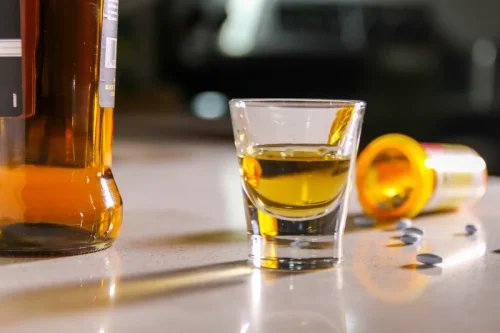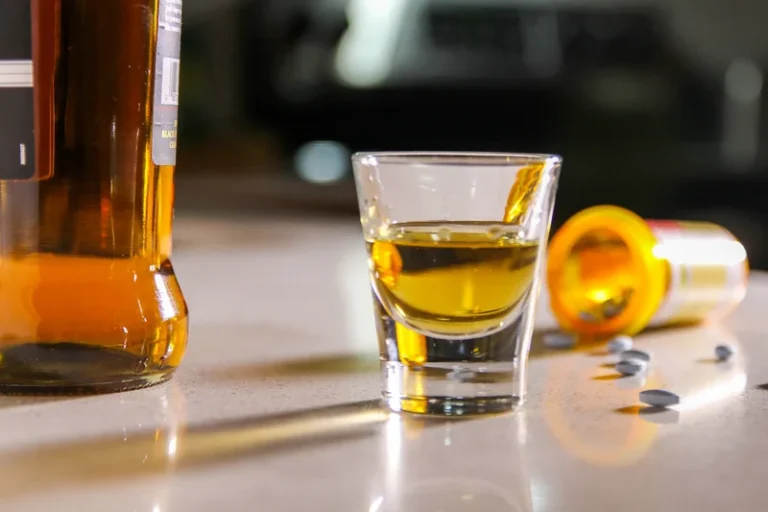Telehealth enables our clinicians to provide HIPAA compliant services to our clients over the phone, so you don’t have to come into the office. Your clinician will call you during your scheduled appointment time at your preferred number. Our admissions counselors are available 24/7 to guide you through the admissions process. We provide free, confidential assessments at any time — no appointment necessary. Based on the results of this assessment, we’ll recommend one of our inpatient or outpatient programs.
Alcohol & Drug Counseling
Boston sober living tends to be very expensive, and our goal is to offer the same service as an exclusive sober living community at an affordable price. The first step towards receiving exemplary care at Greenleaf Behavioral Health Hospital begins with a simple phone call. When you call, you will speak with a compassionate admissions counselor who will be able to answer any questions that you may have and who will introduce you to the programming that we offer here at Greenleaf. Individual care meets the needs of each patient, using personalized treatment to provide them the most relevant care and greatest chance of success.
- This service is free and puts you under no obligation to choose our programming.
- Men and women attend treatment for addiction in a co-ed setting, going to therapy groups together to share experiences, struggles, and successes.
- Within this treatment track, clients will be challenged to face the reality of their drug or alcohol addictions, setting the stage for lasting sobriety.
- Our treatment center is the most beneficial place for people who are struggling with drug addiction to begin their journeys toward recovery.
- Our psychiatric care unit provides intensive services for adults who are struggling with acute mental health challenges, such as hallucinations or schizophrenia.
Greenleaf Behavioral Health Hospital
Greenleaf prioritizes the unique experiences and needs of each client, formulating individualized treatment plans that feel empowering yet achievable. Their age-specific inpatient programs include intensive programs for acute conditions, as well as specific tracks for mental health, substance use, and co-occurring disorders. Their outpatient care features intensive outpatient and partial hospitalization programs designed to support ongoing recovery. Greenleaf offers a variety of evidence-based and holistic therapies to support whole-person healing.
We list any treatment center that meets our rehab criteria, giving you the best list of options possible when looking for treatment. Next, you will be shown to your room and receive an orientation to the programming at Greenleaf. You will also receive a schedule which will outline what you can expect during your time in our care.
Patient and therapist meet 1-on-1 to work through difficult emotions and behavioral challenges in a personal, private setting. Symptoms of depression may include fatigue, a sense of numbness, and loss of interest in activities. Using alcohol as a coping mechanism, or drinking excessively throughout the week, signals an alcohol use disorder.
Provided for individuals who have completed IOP or other treatment/recovery programs who would benefit from ongoing support to help maintain a recovery environment. A person with multiple mental health diagnoses, such as addiction and depression, has co-occurring disorders also called dual diagnosis. Combined with behavioral therapy, prescribed medications can enhance treatment by relieving withdrawal symptoms and focus patients on their recovery. In a residential rehab program, patients live onsite, with access to daily treatment and 24-hour care. Every month, 150,000 people search for addiction or mental health treatment on Recovery.com. They may want to relax, to feel good, to have a good time, or simply do it because their peers are doing it.
Our career guidance goes above and beyond what you’d ordinarily receive in a transitional living place. We understand what it takes to overcome an addiction to drugs and/or alcohol, and we invite you to participate in our Substance Abuse PHP if you are looking to leave a substance abuse problem in the past. In his room with Kevin, he talked about his kids, how he wanted a relationship with them, how he thought nothing would work. One client, who spoke on condition of anonymity, said Bates was being taken off his insomnia medication by staff and was having trouble sleeping. We have an outstanding home in the Pope’s Hill eco sober house boston area of Dorchester in Boston, MA.
Mental Health & Substance Abuse Partial Hospitalization Program in Valdosta, GA
Our partial hospitalization program, available for adults, is a step between inpatient care and outpatient therapy. Programming takes place five days a week, five hours each day, over the course of four to six weeks. We offer distinct groups for mental health and substance use, covering topics like depression, anxiety, and relapse prevention. Person-centered care and evidence-based practices, including cognitive behavioral therapy (CBT) and motivational interviewing (MI), are key elements of our PHP. Additionally, patients can meet one-on-one with a therapist to talk about individual concerns outside of the group setting. Greenleaf Behavioral Health Hospital is a 113-bed behavioral health and substance abuse treatment hospital located in the heart of South Georgia.
Popular Centers
In an IOP, patients live at home or a sober living, but attend treatment typically 9-15 hours a week. When clients enroll in an outpatient program, they receive a highly customized aftercare plan to promote long-term success. Greenleaf begins the discharge planning process on the first day of programming to arrange continuing care, living arrangements, and even transportation. Additionally, Greenleaf will refer clients to follow-up services depending on their needs. Our inpatient treatment programs are for adolescents (ages 12-17) and adults who are a danger to themselves or others and require intensive observation and stabilization.
Acadia Healthcare’s behavioral health treatment facilities specialize in helping children, adolescents, adults, and seniors who are suffering from mental health concerns and/or drug and alcohol addiction. With a focus on quality clinical programs and customer service, Greenleaf Behavioral Health Hospital strives to be the preferred psychiatric treatment provider in Georgia. Our treatment team includes board-certified psychiatrists, therapists and support staff that come from a variety of clinical disciplines. We make sure to meet clients where they are in their mental, behavioral, or psychiatric struggles, and guide them down a path of recovery. Our primary goal at Greenleaf is to provide valuable care and thorough treatment.
Teens receive the treatment they need for mental health disorders and addiction, with the added support of educational and vocational services. Greenleaf Hospital provides effective treatment for men & women struggling with substance abuse and addiction. Once the assessment is complete, one of our physicians will review it in order to determine the level of care that will most appropriately meet your needs.
Join our global mission of connecting patients with addiction and mental health treatment. Recovery.com combines independent research with expert guidance on addiction and mental health treatment. Our mission is to help everyone find the best path to recovery through the most comprehensive, helpful network of treatment providers worldwide. In late 2018, a new Brady’s Place sober house opened on Seaver Street in Boston, and, according to city inspectional reports, began packing clients into illegal basement bedrooms. When men and women are struggling with a substance abuse problem, they may not realize how deeply the addiction has impacted their lives. They may have lost their job due to repeated absences or a constant neglect of responsibilities.
Recovery/Sober Homes provide a structured, alcohol & drug free environment for individuals recovering from addiction. The fire department didn’t even know it was a sober house until April 2018, according to Fire Chief Michael Sullivan, when they were summoned to tend to a client who said she’d been doing cocaine for five days. Firefighters found more than 20 people living in a home without what they believed were adequate fire detection systems. Advocates for the homes say the lack of regulation Victory Programs Review means that people struggling to overcome addiction will not be discriminated against when they seek safe housing.
- Therapists incorporate CBT and motivational interviewing techniques to help patients enhance their coping skills and make positive life changes.
- In a PHP, patients live at home but follow an intensive schedule of treatment.
- Their diverse expertise ensures our resources and product are innovative, evidence-based, and effective.
- The basis of our outpatient programs are to provide group therapy to adults.
- This mental health condition is characterized by extreme mood swings between depression, mania, and remission.
Please call our office at the phone number listed below to get more information and to register. Our team will walk you through all available options and explain what you can expect during your time with us. Every step of the way, we’ll be by your side, helping you advance toward your goals. Explore how early support can positively shape a teen’s emotional and developmental journey. Agitation, muscle ticks, psychosis, and heart issues are common symptoms of cocaine abuse. They are highly habit forming, and their abuse can cause mood changes and poor judgement.
To transform the behavioral healthcare experience through a culture of safety, professionalism, reliability, teamwork, job knowledge, customer service and results. Discover what makes their approach to mental health and recovery truly patient-centered. This mental health condition is characterized by extreme mood swings between depression, mania, and remission. In a PHP, patients live at home but follow an intensive schedule of treatment. Schizophrenia is a serious mental health condition that causes hallucinations, delusions, and disordered thinking.
MassHousing is an independent, quasi-public agency created in 1966 and charged with providing financing for affordable housing in Massachusetts. The Agency raises capital by selling bonds and lends the proceeds to low- and moderate-income homebuyers and homeowners, and to developers who build or preserve affordable and/or mixed-income rental housing. At Greenleaf Behavioral Health Hospital, we are available 24/7 to adolescents and adults who are in need. If you or someone you love is struggling and needs help to overcome a behavioral condition, a mental illness, and/or a substance abuse problem, please do not hesitate to contact us. Our psychiatric care unit provides intensive services for adults who are struggling with acute mental health challenges, such as hallucinations or schizophrenia.
Boston, Massachusetts offers many sober living resources for men and women in recovery from addiction. A sober living home creates fellowship and community that can help you get back to a life where you are happy and fulfilled. The proper support, combined with a safe environment and Alcoholism in family systems first hand know-how will guide you to experience a new way of being and behaving. A sober living environment reinforces honesty and integrity as it supports you on your journey to acquiring a great new lifestyle.






